
What is your business “brand”? Is it a logo? A color scheme? Your products? Your mission statement? You probably already know where we are going with this. From how you interact with your customers on the job, to how you present yourself online, your brand is a representation of everything your business says and does.
For businesses in the better building sector—like solar installers, HVAC contractors, and home performance professionals—developing a local brand presence is key to a successful business. So how can you leverage your digital tools to boost the presence of your local brand?
Following up from our most recent webinar, let’s take a little peek behind the curtain at the local-based digital strategies we use here at Energy Circle for increasing lead volume and conversions.
Your Brand: The Real World vs. The Online World
Before the internet was as ubiquitous as The Beatles were in ’66 (sorry Stones fan, you know it’s true), building a local presence for your brand meant sponsoring Little League teams, buying billboard ads, spending big bucks on local tv or radio commercial productions, and taking out yellow page ad space. If your brand was “sticky” enough to be the first company on local homeowners’ minds, or if you were able to advertise on the right billboard, you got the jobs in town.
Nowadays, customers aren’t racking their brains trying to recall that one specific local contractor ad—they are going online to ask which company they should call.
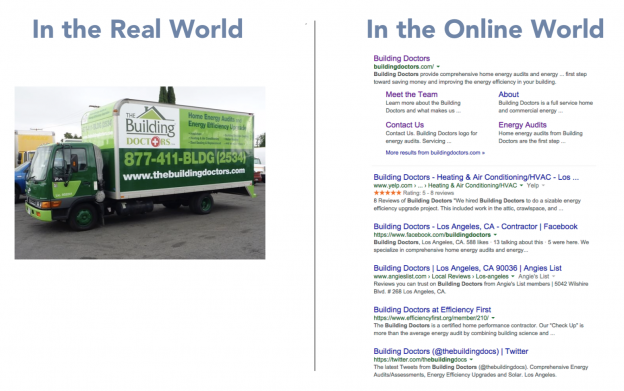
Physical and print advertising is still an effective measure for building awareness and recognition of your local brand, but your friends and neighbors are still going to search for their needs online.
Google Can Only Measure What It Can See
This isn’t to say that all of the marketing dollars you spend on radio ads or adult softball league uniforms are going to waste—there is still inherent value in these tried and true advertising strategies. But these measures aren’t going to help your online visibility. Why? Because Google can only measure what it can see.
Engagement with your brand online is how your target customer base demonstrates their trust in your business and how you build authority as a brand online. Those trust and authority indicators are also how Google can tell the difference between you and another internet scheme.
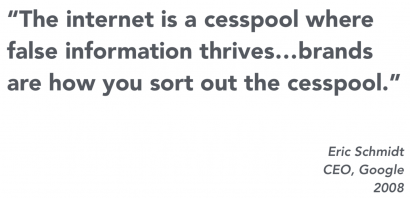
Think all the negativity of the internet is something new? Former Google CEO Eric Schmidt recognized it way back in 2008.
“Why does the online world matter? What is the ROI?”
At the end of the day, as a business owner you want to know, when it comes to marketing strategies, “What is my return going to be?” How many leads will you get, and how many of those will be quality leads that will eventually convert to paying customers? Well, when it comes to digital marketing, strong brands get strong results:
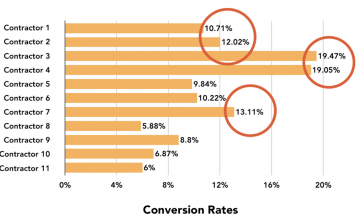
In this list of Energy Circle clients, companies with the strongest local brand identity and presence see the best conversion rates when it comes to search.
How is it that these companies are able to convert at such high rates when it comes to search? We have to start by asking the big question:
What is Google Looking For?
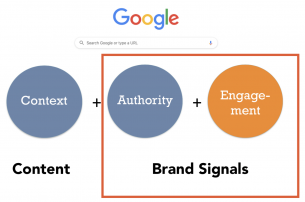
These are the three pillars of what Google is looking for to keep search results as relevant and helpful as possible to the searcher.
In order to separate the wheat from the chaff, Google relies on a “three-legged stool”—Context, Authority, and Engagement—for search and rankings.
-
Context = How relevant is your content to the searcher?
-
Authority = How trustworthy has your content, and your brand, been in the past?
-
Engagement = How have other searchers interacted with your content in the past?
So we know a little about what Google is looking for, but how can they measure all of these things? The truth is, we cannot always know with 100% certainty what the Google algorithms are prioritizing and how they are getting their information.
What we do know though, based on testing, optimizing, constant research, and trying to squeeze as much information out of Google reps as we possibly can, that this is how Google is measuring the relevance, prominence, and proximity factors of your website content to the searcher:
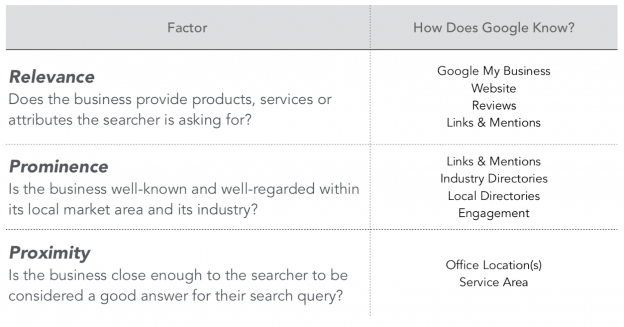
This list of local search algorithm factors leans towards historical engagement from searchers. The more engaging your online presence is, the stronger your local brand visibility is (online).
Notice, on the right-side column, how many engagements based indicators there are? Google My Business, reviews, links and mentions—it’s clear Google places a premium on human beings engaging with your brand.
And now that we know both what Google is looking for, as well as what indicators they use to support their search results and rankings, let's get into some strategy!
Developing a Local Brand Strategy
We’ve said it before, and we will say it again: Your website lays the foundation for your comprehensive and integrated marketing strategy.
Strengthen Your Website
Does your website showcase your E.A.T. (Expertise, Authority, and Trust)? The key performance indicators of how your website is performing are going to come from analyzing how the traffic to your website is behaving. Be mindful of how long people are staying on your site and what pages they are visiting. Are they reading multiple pages per visit or leaving after one page? What are your top blogs and landing pages?
[As a side note: Looking for tips on how you can determine your local brand identity and website performance? We’ve got a blog for that.]
Google My Business
Google is going to use the data they have access to, and your Google My Business page is a treasure trove of information about how searchers are interacting with your brand. There are many ways for someone to engage with a GMB page:
-
Call button
-
Direct messaging
-
Visit the website button
-
Request a quote (note that this is not available in all areas yet)
-
GMB posts*
*In fact, engagement within the seven day lifespan of a post on your GMB page is a huge indicator to Google that searchers are interacting with your up to date, relevant content.
Reviews
When it comes to Google reviews, quantity is still important. But also: Respond to your reviews! Whether they are good or bad, engage with people talking about your brand. Responding to your reviews is a signal to Google that you are at the helm of your own business and you are paying attention (even to the negativity).
Sponsorships
You may remember we said Google can only measure what it can see—but that doesn’t mean there aren’t ways to turn your Little League sponsorship into a digital asset.
There are early indicators that mentions of your brand on another website can have the same benefits as linking to your website from another reputable source. Link building has been a large part of search engine marketing in the past, and is still an effective measure to increase your visibility. If you are already participating in local sponsorships, follow up and make sure your website or brand name is being mentioned online as well to get the most of your marketing.
Your Secret Weapon: Act Locally!
Lifting your brand above the cesspool of the internet can feel like fighting against the ropes with a blindfold on. But once you have a general knowledge of what Google is looking for, and how they are looking for it, you can begin to integrate a digital strategy into your local brand identity. Remember, Google can only measure what it can see, and strong brands yield strong results!
Looking to hone your business’s digital marketing strategy and increase your lead volume and conversions? Contact us today to learn how we can help.